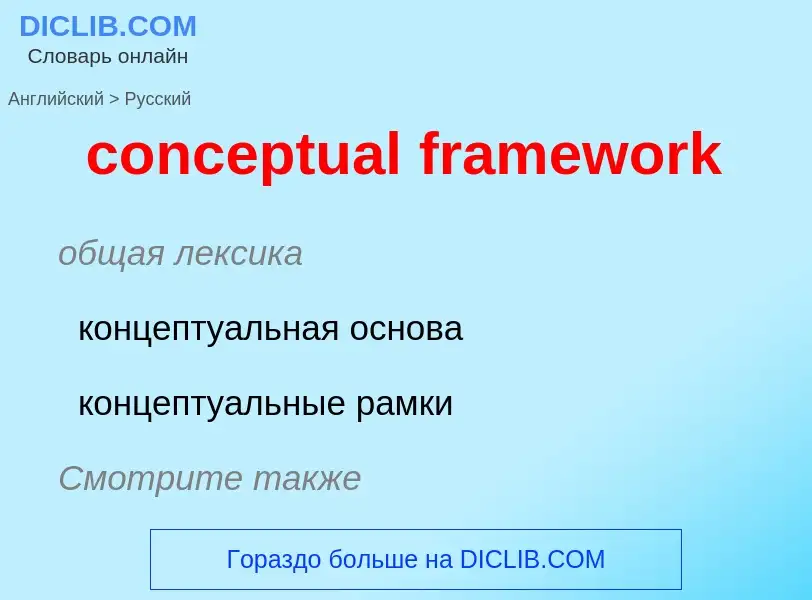Перевод и анализ слов искусственным интеллектом ChatGPT
На этой странице Вы можете получить подробный анализ слова или словосочетания, произведенный с помощью лучшей на сегодняшний день технологии искусственного интеллекта:
- как употребляется слово
- частота употребления
- используется оно чаще в устной или письменной речи
- варианты перевода слова
- примеры употребления (несколько фраз с переводом)
- этимология
conceptual framework - перевод на русский
общая лексика
концептуальная основа
концептуальные рамки
Смотрите также
общая лексика
концептуальная модель
способ представления понятий или объектов предметной области
математика
содержательная модель
Смотрите также
Определение
Википедия
A conceptual framework is an analytical tool with several variations and contexts. It can be applied in different categories of work where an overall picture is needed. It is used to make conceptual distinctions and organize ideas. Strong conceptual frameworks capture something real and do this in a way that is easy to remember and apply.
Isaiah Berlin used the metaphor of a "fox" and a "hedgehog" to make conceptual distinctions in how important philosophers and authors view the world. Berlin describes hedgehogs as those who use a single idea or organizing principle to view the world (such as Dante Alighieri, Blaise Pascal, Fyodor Dostoyevsky, Plato, Henrik Ibsen and Georg Wilhelm Friedrich Hegel). Foxes, on the other hand, incorporate a type of pluralism and view the world through multiple, sometimes conflicting, lenses (examples include Johann Wolfgang von Goethe, James Joyce, William Shakespeare, Aristotle, Herodotus, Molière, and Honoré de Balzac).
Economists use the conceptual framework of "supply" and "demand" to distinguish between the behavior and incentive systems of firms and consumers. Like many conceptual frameworks, supply and demand can be presented through visual or graphical representations (see demand curve). Both political science and economics use principal agent theory as a conceptual framework. The politics-administration dichotomy is a long-standing conceptual framework used in public administration. All three of these cases are examples of a macro level conceptual framework.


